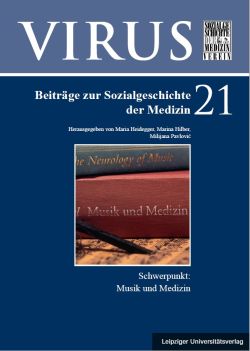
VIRUS Band 21, pp. 085-102, 2023/03/22
Schwerpunkt: Musik und Medizin

A musical Proust effect refers to a situation in which music transports us back to a whole-bodily felt experience from our past. This article traces concepts of this effect, here heuristically called “musical madeleines”, in the history of science since the 18th century and shows how both its explanations and its evaluations have changed over the decades in relation to contemporary medical, psychological and musical knowledge. The historical focus is on 18th-century physiology and 19th-century psychophysics, with Ernst Anton Nicolai’s Die Verbindung der Musik mit der Artzneygelahrheit (1745) and Gustav Theodor Fechner’s Vorschule der Ästhetik (1876) serving as main examples. These historical accounts are framed by some reflections on empirical music research today and some suggestions for a cultural-historical embedding in the history of medicine, emotions and music in general and in the discourses on programme music versus absolute music in particular.
Keywords: Proust effect, music and memory, music and emotions, 18th-century physiology, 19th-century psychophysics, empirical music aesthetics